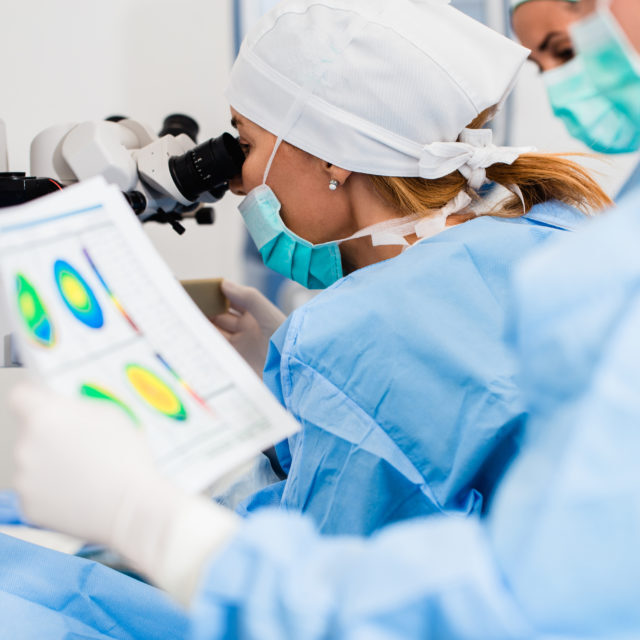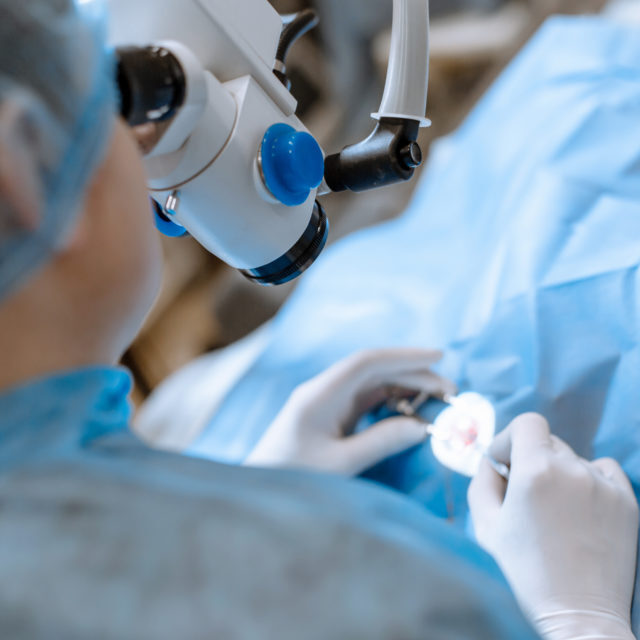
Considering Rochester Cataract Surgery?
If you are considering Cataract surgery in Rochester NY, You have arrived at the right place as Robbins Eye Doctors also serve Webster, Penfield, Pittsford and surrounding areas.
The eye is basically a two lense system for focusing the light on the retina which is analogous to the film in a camera.The internal lens of the eye can change its power to focus the light for near vision. Typically this internal lens begins to malfunction in our mid to late forties. This is why most people who enjoy perfect vision for the first 4 to 5 decades of life eventually require reading spectacles. This stage is classified as Dysfunctional Lens Syndrome (DLS). For some of these patients a procedure called Refractive Lens Exchange or RLE can restore good functional near vision.

We Specialize in Cataract Surgery in Rochester NY
A cataract is a progressive clouding of the eye’s natural lens that interferes with light passing through the retina. Individuals in Rochester considering cataract surgery usually describe their vision as looking through a piece of wax paper and a gradual blurring or dimming of vision. Other common symptoms are difficulty driving at night, increasing glare, trouble following the golf ball, and inability to read fine print. The ocular examination finds that the vision cannot be significantly improved even with stronger spectacles or other optical aids. The only effective treatment for clinically significant cataracts is surgery. Cataracts are a normal development and not a disease per se. It is fair to say that if one lives long enough he or she will develop a cataract. There are some diseases such as Diabetes that make one prone to develop cataracts earlier in life. Similarly eyes that have been traumatized or subjected to inflammation will often develop cataract earlier in life. There are also some hereditary factors that cause cataracts at an earlier age. One need not be a senior citizen to develop cataracts although the frequency is higher in people over 60. There is no longer any concept of a cataract being “ripe” or “not ready” for surgery. The indication for surgery is that the decline in vision is interfering with the patient’s ability to maintain his or her lifestyle. The goal of treatment is to improve the vision and more importantly the quality of life.
Cataract surgery the removal of the cloudy lens in the eye followed by replacement with one of several types of intraocular lenses (IOLs). Cataract surgery is successful, and vision improved, in the vast majority of patients—more than 98% as a matter of fact.*
* According to the American Society of Cataract and Refractive Surgery

Rochester Cataract Surgery is Usually Performed as an Outpatient Procedure
Surgery is usually performed as an outpatient procedure either at an Ambulatory Surgery Center (ASC) such as Brighton Surgery Center or a local hospital. In the past the only option available was to create two small incisions with a blade and break the cataract up with a vibrating ultrasonic needle. Dr. Robbins was the first surgeon in the area to utilize the Alcon Femtosecond LenSx laser to create precise micro-incisions in the cornea, cut open and dissect the cataract with the laser and also create corneal incisions to reduce pre-existing astigmatism. The Femtosecond laser technology adapted from LASIK has resulted in even greater precision and reduced astigmatism. This results in quicker healing and better uncorrected vision.
With either method a new lens is inserted and unfolds into its permanent position. Basic monovision fixed focus IOLs are covered by most insurances. For patients who qualify, even better uncorrected vision can be achieved with specialized Toric and Multifocal IOLs. With the laser and and sometimes with basic no-frill cataract surgery, no sutures are required as the micro-incisions are self-healing.